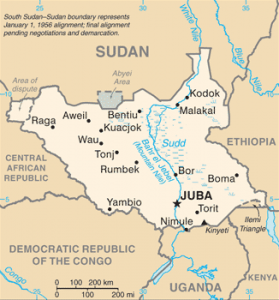In what some believe may be the next worldwide eradicated infectious disease in very short order, the number of Guinea worm disease cases decreased by another 15 percent to only 126 cases (provisional) in all of 2014, according to a Carter Center press release today.

These provisional numbers, reported by ministries of health in the remaining four endemic nations and compiled by the Center, show that cases of the debilitating disease were reduced in 2014 compared to 148 cases in 2013. When the Center began leading the first international campaign to eradicate a parasitic disease in 1986, there were an estimated 3.5 million Guinea worm cases occurring annually in Africa and Asia.
“The number of cases of Guinea worm disease continued decreasing in 2014, bringing Guinea worm eradication closer to the finish line,” said former U.S. President Jimmy Carter, whose Carter Center leads the international campaign to eradicate this waterborne disease. “We believe eradication of Guinea worm disease is very possible in the next few years, but success will require the strong commitment and focus of the four remaining endemic countries and the many international partners in this public health initiative.”
In 1991, there were 23,735 villages with endemic transmission of Guinea worm disease in 21 countries in Africa and Asia. As of the end of 2014, there were only 30 endemic villages in four countries — all in Africa.
South Sudan, the world’s youngest nation, reported 70 cases, or 56 percent of the worldwide case total in 2014. Most of those cases were in Eastern Equatoria state. The remaining indigenous cases in 2014 were reported in isolated areas of Chad (13), Mali (40), and Ethiopia (3).
Considered a neglected tropical disease, Guinea worm disease (dracunculiasis) is contracted when people consume water contaminated with Guinea worm larvae. After a year, a meter-long worm slowly emerges from the body through a painful blister in the skin. In the absence of a vaccine or medical treatment, the ancient disease is being wiped out mainly through community-based interventions to educate and change behavior, such as teaching people to filter all drinking water and preventing contamination by keeping anyone with an emerging worm from entering water sources.
The Carter Center, together with ministries of health, local communities, and other partners, has reduced cases by more than 99.99 percent since 1986. The Center estimates that the eradication campaign has averted more than 80 million cases among the world’s poorest and most neglected people. Guinea worm disease is positioned to be the second human disease, after smallpox, to be eradicated. It will be the first parasitic disease to be eradicated and the first disease to be eradicated without the use of a vaccine or medicine.


3 thoughts on “Guinea worm disease: 126 cases reported in 2014”